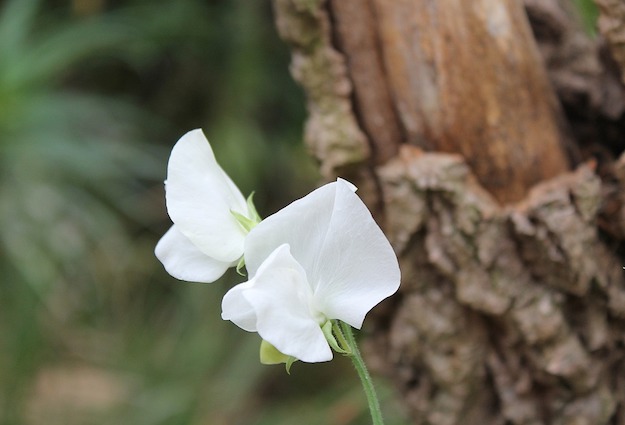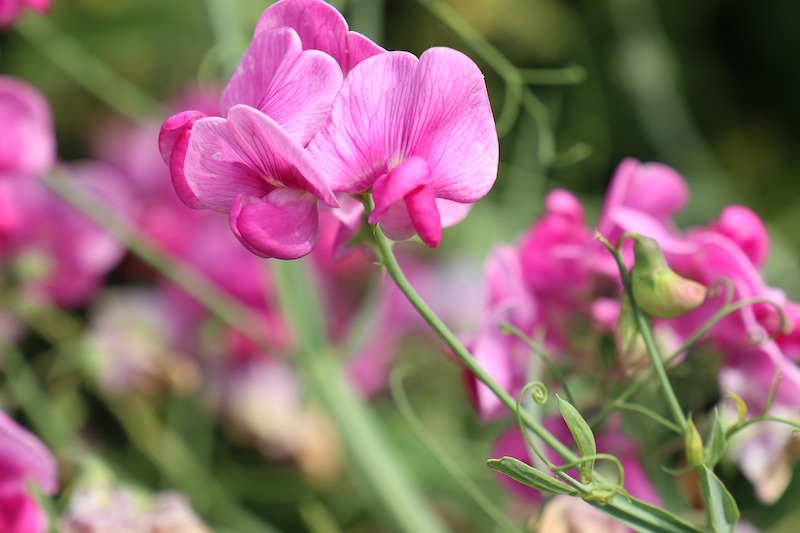Don't you just love the stunning blooms in the garden and the sweet-scented air in spring? Growing sweet pea this season will supply your garden with both. And I, on the other hand, will provide you with this easy guide to growing sweet peas!
Growing Sweet Peas For A Lovely And Fragrant Garden
Growing sweet pea this spring can be really exciting and I am not one to miss out on it. Sweet pea is a well-loved cottage garden plant, yet somehow the modern garden landscape makes no room for this sweet and dainty bloom. Luckily, edible landscaping is now a fad and sweet peas give vegetable gardens a feeling of comfort with its fragrance and charm with its pretty blooms. Grow sweet peas in your garden now and learn how as you read through!
Where And When To Grow Sweet Peas
Sweet peas are cool-season plants which love the sun but prefer their roots moist. So its best to grow them in spring, especially in temperate areas. In zones 9 and colder, it's best to grow sweet peas in early spring, but you can grow sweet peas in early fall for warmer zones. There are low growing sweet pea varieties but they're commonly a vine plant. Grow sweet peas in areas where they can climb, or set up a trellis or a vine support.
Sweet Pea Varieties
Sweet peas are old fashioned annual plants which are commonly seen in English cottage gardens. They've been grown for centuries and the varieties just multiplied with various sizes, shapes, colors and even scent. Sadly, some of the newer varieties developed have lost the signature scent. So I've sampled some of the most fragrant varieties, the essence of sweet peas. Check out these sweet-smelling varieties below:
‘April In Paris' Sweet Peas
If you're into subtle colors in sweet peas and if you're looking for ‘that' scent, the ‘April in Paris' sweet variety is for you. It's a lovely cream yellow color fringed with purple, which is romantic in a flower garden.
Matucana Sweet Peas
|
Want flashier colors in your sweet peas? A highly perfumed variety, the Matucana, has a burgundy color with hints of blue, purple, and lilac, making it all the more gorgeous.
‘Mrs. Colier' Lathyrus Odoratus Sweet Pea
A hardy annual climber, the ‘Mrs. Collier' sweet pea is a very fragrant variety with a yellow cream color. You can also grow this variety in early summer.
Royal Red Lathyrus Odoratus Sweet Pea
Of course, the red color can never be absent in plant color varieties, and this one in sweet peas is lovely. It's amazing how the color is just as lovely as its scent.
‘Lord Nelson' Sweet Peas
Don't you just love blue flowers in the garden? Blue varieties such as the ‘Lord Nelson' will make a charming backdrop for colorful low-lying flowers like rose bushes or primroses plus it's extremely fragrant.
How To Grow Sweet Peas

Growing sweet peas from seeds can be really easy peasy, it's practically no sweat. Follow the simple steps below and find out for yourself.
Step1. Preparing Soil And Plant Bed
Prepare your plant bed by cultivating the soil. Then add organic compost and a balanced organic fertilizer. You can add a watering system like drip irrigation for added convenience.
Step 2. Preparing Sweet Pea Seeds
Seeds of sweet peas have a hard coat. Soak them in water for 24 hours before planting to improve germination. You can also use a nail clipper to nick the coats.
Step 3. Planting Sweet Peas

Poke holes along a side of the bed close to the vine support (if you are growing the vine types) three inches apart and about an inch deep. Water the plant bed after planting the seeds.
Step 4. Thinning Sweet Pea Seedlings
When your sweet peas have grown two to three sets of leaves, it's time to thin them down. Thin the seedlings five to six inches apart to maintain good air circulation. Pinch off the lower set of leaves to help the plant grow bushier and grow more flowers.
Step 5. Caring For Sweet Pea Plants
Mulch the base of the plants to keep the roots of the sweet peas moist. When your sweet peas have grown a bit bigger, you can plant low-growing annuals like spinach, lettuce or beet. They will benefit from each other.
Step 6. Deadheading Sweet Pea Blossoms

When your sweet peas have started to bloom, deadheading or cutting off the dried and spent flower heads will help to keep it blooming for as long as possible. You can cut as many as possible for a bouquet and this will encourage the plant to bloom instead of seeding.
Follow the step-by-step guide to growing sweet peas this spring in your garden:
Don't you agree, growing sweet peas can be easy peasy? I'm sure you'll also agree, it's charming to be picking your homegrown flowers and have their sweet scent fill out your home. Take advantage of the cool season now and start growing sweet peas in your garden!
Ever grown sweet peas before? Got any ideas you might want to share? I'd be delighted to hear all about it in the comments below!
Looking to grow more flowers this spring? Then these easy to grow stunning perennial flowers are just perfect!
Don’t forget to follow us on Facebook, Instagram, Pinterest, and Twitter for more smart gardening ideas!




